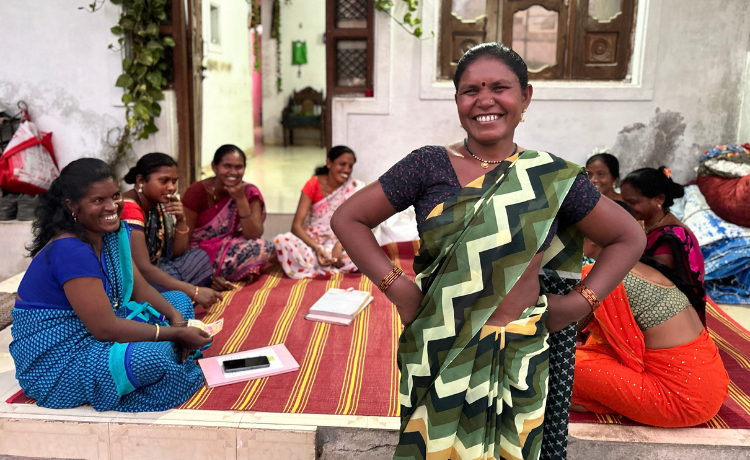India is home to the fourth-largest agricultural sector in the world and a crucial part of the country’s economy. As agranian labour, women’s participation has always been significant, with estimates ranging from 63% to 80%.
Read more

In rural India, where traditional roles and limited opportunities often define the lives of women, education holds the potential to open doors that extend far beyond the school fence. It is not just about learning to read or write—it’s about building knowledge, skills, and confidence that enable women to make informed decisions, support their families, and participate actively in their communities.
Read more
A movement is underway across India, to empower women to become ‘lakhpati didis!’ Ambuja Foundation is playing its part – encouraging rural women to strive for a Rs. 1 lakh income and fostering micro enterprises along the way.
Read more
In a district of Saurashtra, Gujarat, select villagers are of a princely lineage – being direct descendants of small-scale princely states that once ruled the lands. Here, women are considered so ‘royal’ that they are confined to the four walls of their house compound to prevent them from ‘mixing with commoners’ – their faces never seen by others, forbidden to travel and unless a person is of a particular caste, they can never enter their homes.
Read more
In India, women-led nano enterprises are quietly reshaping the business landscape. Despite facing challenges like limited resources and navigating a dynamic market, these ventures, primarily run from homes, are thriving, with the majority operating outside the traditional brick-and-mortar model. Efforts to promote self-employment among women, particularly through home-based businesses, have intensified, with government and private initiatives offering schemes for credit, training, and incubation programs tailored to women, leading to an increase in nano enterprises.
Read more
Villagers of Arjuni live nestled on the fringes of the Barnawapara forest and are primarily Adivasi tribals – relying on the gifts of the forest for their livelihoods. Here, the primary source of income is found in weaving traditional bamboo products – baskets, brooms, fans and other household utility and decorative items.
Read more
With consistent efforts to uplift communities at Farakka, West Bengal since 2006, Ambuja Foundation commissioned an external Social Return on Investment Study to better understand the impact of its interventions. Conducted by the CII Centre of Excellence for Sustainable Development (CESD), New Delhi, the study returned the finding that for every Re. 1 invested by Ambuja Foundation, a social return, valued at Rs. 9.91, was generated.
Read more
In a vast developing country like India with deeply entrenched gender divides, the words ‘water’ and ‘women’ are synonymous with one another. For it is on the shoulders of the women of the family, where the responsibility of collecting water, rests. And as water becomes more and more scarce, it is a heavy, and unfair burden to bear – particularly with its impacts exacerbated by the consequences of climate change. As water scarcity, heatwaves and droughts become more widespread, women and girls find themselves walking greater distances to fetch water.
Read more
“In Darlaghat, Himachal Pradesh, livestock are a major source of income for families. A big challenge however, was access to timely, good quality veterinary care.
Read more
“When Ambuja Foundation approached me to implement the internet saathi project, I was not very sure. Forget the internet - women, including me, didn’t even own a smartphone!
Read more
“A special invitation for 'loans' went out to SHGs from the Women's Federation of Chandrapur in 2015. Usually provided for small businesses, weddings or for buying a house/vehicle, this was the first time loans were being offered for toilets.
Read more
“I’ve got 2 children and my husband is a private driver, but I always wanted to do something for myself. In 2014 I learned how to knit using a machine, making sweaters and scarfs and the like, I invested in my own digital machine and started taking orders. In a month I now earn 15-20,000 – which helps me to fix my house, pay for treatment of my health issues and support my children’s education.
Read more

